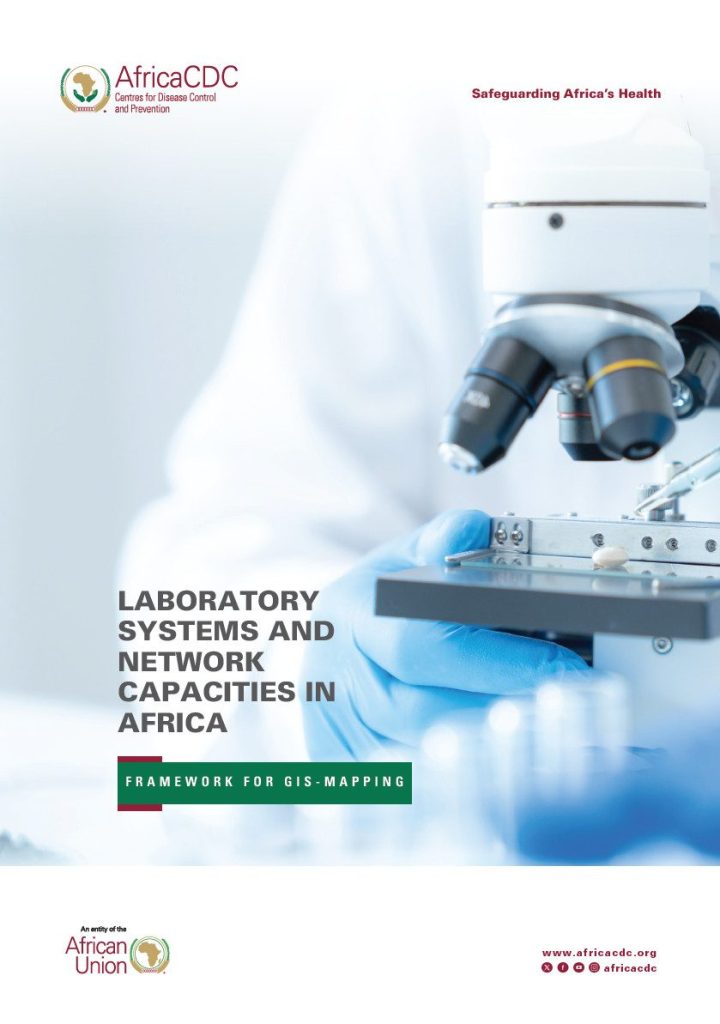EXECUTIVE SUMMARY
Today, the demand for testing services is increasing and becoming more diverse across various countries’ networks of public and private laboratories. These laboratories are expected to offer expanded and novel testing services. However, the extent of their capacity and coverage is only known in basic terms.
The laboratory capacity for epidemic-prone diseases, as well as communicable and non-communicable diseases, drug resistance testing, pathogen genome sequencing, diagnostic capacity for disease surveillance, and surge capacity for outbreak-related diseases, remains poorly understood. This lack of information hampers both small and large-scale efforts to address the existing gaps.
Mapping laboratory functions across Africa is crucial for several reasons: providing evidence and data contributing to the overall goal of enhancing healthcare systems, improving functionality of national and regional laboratory networks, optimizing resource allocation, facilitating cross-border transportation of specimens for diagnostic testing, increasing diagnostic testing capacity and surveillance coverage of laboratory networks, preparing for and responding to disease outbreaks and ensuring compliance to with IHR requirements pertaining to laboratory capacities and capabilities. Africa CDC, in partnership with ASLM and other partners, have been expanding laboratory capacity mapping across Africa regions since 2018.
The implementation of this framework will leverage existing regional and national institutions and structures for better coordination and collaboration. Africa CDC, in partnership with ASLM and other partners will facilitate the updating of the existing GIS LabMap survey tool and data systems in collaboration with Member states. The Continental Laboratory Technical Working Group (AfLTWG) will play a critical role in coordinating and providing guidance for GIS Lab Mapping activities. The Systems & Networks Steering Group, a new structure, will be dedicated continental level to monitor and review implementation on regular basis and feed into the AfLTWG).
At country level, national One Health laboratory TWGs are expected to take a similar role and where these do not existing, the NPHI can assume this role. The Africa CDC’s five regional Coordinating Centres (RCCs) will act as key hubs in supporting countries in GIS LabMap and work directly with National Public Health Institutes (NPHIs) and/or similar government structure structures across One Health sectors.
This Framework provides guidance on how Member States, Africa CDC, ASLM and other partners and stakeholders can expand the geospatial mapping of laboratories and usage of the subsequent data for decision making in the African Union (AU) Member States. Specifically, this framework addresses two strategic objectives:
• To expand geospatial mapping of laboratory capacity in AU member states
• To increase the utilization of laboratory capacity mapping data to inform improvement and scale-up of diagnostic capacity.
To achieve these two strategic objectives, Africa CDC, ASLM, Member States, implementing partners and donors commit to:
• Using standardised data collection, storage and data management systems
• Sharing the data and insights to optimise access to diagnostic services and cross boarder disease surveillance.
• Translating data into policy by integrating data into the policy-making process to create more effective, adaptive, and evidence-based public policies.
• Engaging all One health sector stakeholders to enhance collaboration in addressing diagnostic capacity gaps of public health disease threats across the sectors.
• Mobilising resources for the implementation of the data collection, use cases and capacity strengthening workplans including priority disease surveillance.
• Updating GIS mapping data and evaluating the progress in laboratory capacity system strengthening including laboratory-based surveillance.
